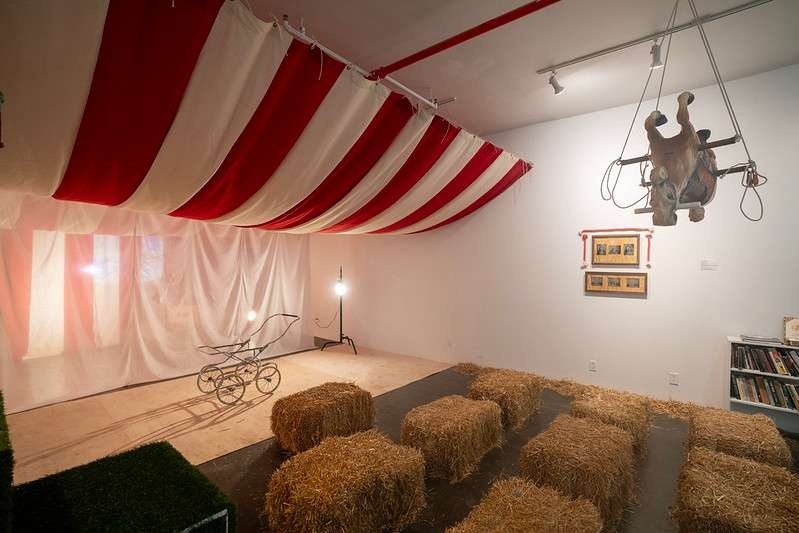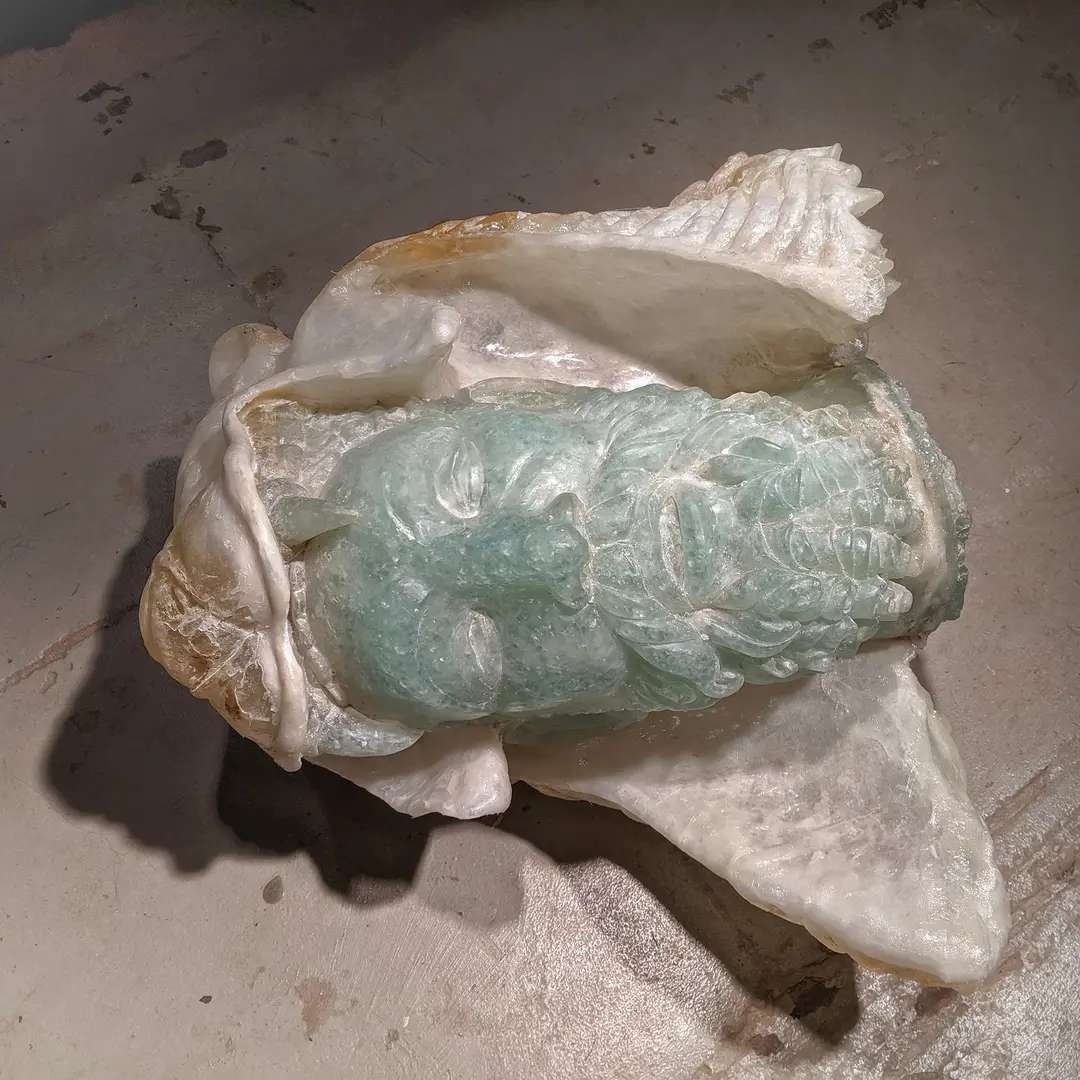“Ours is a culture based on excess, on overproduction; the result is a steady loss of sharpness in our sensory experience.”
—Susan Sontag, 1964
Within fifty years of Sontag writing these prescient words, the overproduction upon which our culture is based has grown exponentially. Material excess has become the defining means of existence. Furthermore, the overproduction of visual content is directly responsible for the muted sentient experience of contemporary life. Visual artist Molly Dilworth’s work updates Sontag’s description of how art ought to be viewed. As written in Sontag’s Against Interpretation: “Our task is not to find the maximum amount of content in a work of art, much less to squeeze more content out of the work than is already there. Our task is to cut out the content so that we can see the thing at all.” Dilworth transforms non-art objects into art objects, cutting out the extraneous content, so that we may see the thing.
In The Work of Art in the Age of Mechanical Reproduction, Walter Benjamin wrote, “During long periods of history, the mode of human perception changes with humanity’s entire mode of existence. The manner in which human sense perception is organized, the medium in which it is accomplished, is determined not only by nature but by historical circumstances as well.” In contemporary times, our prevailing medium of sense perception is via digitally produced images. The result — as described by Sontag — is a dulled, pseudo-sentient perception. Our predominant mode of living has moved from a tangible, physical state into a digital dimension. We no longer perceive with our eyes, ears, or noses, but with our iphone cameras, and on Facebook pages: The act of perceiving has transitioned from a primary to a secondary experience.
For many years, Robert Irwin did not allow photographs of his work, believing that an image of the work was not capable of capturing the truth of the work. At some point, with the increasing ubiquity of cameras, this insistence became futile and images are now permitted. Irwin’s acrylic columns are currently on view in New York City as part of Pace’s retrospective of his work. At a recent opening at the gallery, visitors most interested in the columns were not drawn to the ways in which they altered the light, or the space surrounding them. Rather, visitors were absorbed by the ways in which the columns altered the presence and perception of the viewers themselves. Standing opposite a column, couples took photographs of each other. Other people stepped a few feet away, playing with the light and the distortion in ways they could capture with their cameras. Rather than questioning or seeking to understand the column, the light surrounding it, and the way it impacted the space; people perceived the work as a context in which to create digital images of themselves, and each other.
The public’s perception of and interaction with Irwin’s work illustrates two pertinent realities: the contemporary sensory experience is one of self-reference and photography as it is manifested in contemporary society is a form of folk art. It is what people spend their time creating and sharing; as Irwin stated, folk art is “when you take a utilitarian object, something you use everyday, and you give it overlays of your own personality.” Instead of experiencing life, perceiving our surroundings and selves, we exert ourselves transforming our experiences of life into images of experiences of life, which we then project out into the world.
It was during the same year that Sontag wrote Against Interpretation that Irwin was transitioning from his line paintings to dots; he would spend months on just the background of these works, determined to transcend the confines of the canvas and its edges. Though Irwin still maintained his studio practice during these years, and had yet to leave painting entirely, he was paring his practice down to its essentials, searching for the same ‘thing’ that is the subject of Sontag’s imperative.
Immersed, as we are, in this culture of visual images and symbols, we face a daily barrage of overt (and covert) attachment of meaning to physical form. Sifting through images in order to process, perceive, and understand them becomes impossible. Observing light and form is secondary to consuming more, producing more, scrolling through more. Lines, shapes, and colors — many layers removed from their fundamental existence — become the diplomats of ideologies, brands, and sentiments. Our ability to perceive and understand images diminishes in a direct and inverse relationship to the increasing oversaturation.
Molly Dilworth’s Date the Time is a response to our dulled sensory experience and a reminder of the fundamental elements of our creative existence. Through transferring excerpts of digital images onto fabric banners, Dilworth evokes elements of abstract design while weaving contemporary modes of production, creation, and self-perception into art-historical and socio-political contexts. Pulling lines and forms from standard Internet images and re-creating them in the large scale of her paintings, Dilworth forces the viewer to see formal elements in the sorts of images we glance at for superficial content. Like Irwin, Dilworth eliminates the extraneous content; she arrests the fundamental forms within the images therefore transforming non-art objects into art objects.
Through early civilization, a human being could expect as many interactions with strangers throughout their lifetime as we experience walking to the train in the morning. Reference points for the construction of art objects were found in nature; there was nothing else from which to cull content or form. Prehistoric art took the forms of stone circles, rows, and monuments. Simple geometric forms were created in response to, and in conjunction with, the curve of the earth, the sun, and the stars. Art was a means of making sense of the universe. Lucy Lippard, in describing prehistoric art writes, “art itself must have begun as nature — not as imitation of nature, nor as formalized representation of it, but simply the perception of relationships between humans and the natural world.” The beginning of art itself was an exercise in conception, in seeing and understanding the world.
As our ability to capture images of the world has increased, our ability to perceive our surroundings has eroded. In 1964, Sontag wrote, “What is important now is to recover our senses. We must learn to see more, to hear more, to feel more.” Though written in a different cultural era, these words stand out for their continued pertinence and universal relevance. Date the Time seeks to restore perception as a means to greater understanding, via time arrested and examined in its simplest terms: the shapes, the light, and the space of its composition. Dilworth evokes a desire and an ability to return to the same sort of sentient experience of art implored by Sontag.
Bibliography
Lippard, Lucy R. (1983) Overlay. The New Press.
Sontag, Susan. (1966) Against Interpretation and Other Essays. Picador.
Weschler, Lawrence. (1982) Seeing is Forgetting the Name of the Thing One Sees. University of California Press.
About the artist
Sara Roffino
Sara Roffino writes about contemporary visual culture. After university, she taught public high school in Manhattan and was a Fulbright scholar in Lisbon.
Projects
Explore/Archive
See allOctober 2025
streamlined reflections, courtesy of noise canceling headphones
Gabrielle Rucker
Gabrielle Rucker reflects on the radical intimacy and auditory life at the heart of Deli Radio
July 2025
Tell My Jockey: CUNTRY’s Discourse From the Horse’s Mouth
Ericka Pérez
Assembly fellow Ericka Pérez reflects on clowning, resistance, and CUNTRY’s radical refusal to perform.
April 2025
The Second Head of Hercules: Art and Resistance Through Four Years of Upheaval
Shakeem Floyd
written in conjunction with artist Onyedike Chuke's Session x Assembly project, The Forever Museum Archive: Circa 2020_An Object





